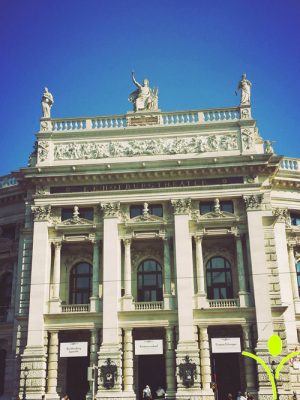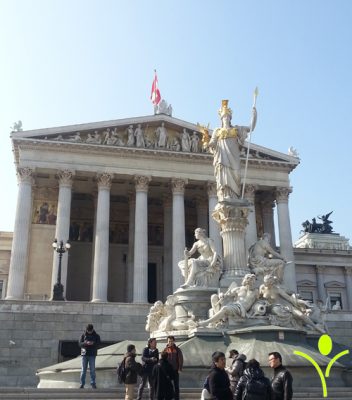For almost seventy years from 1848 to 1916, Vienna stood under the rule of Emperor Franz Josef. This period witnessed enormous transformations in the city’s appearance, its politics and its daily life. After the removal of the old walls and gates, the old enclosed city was able to expand. During the period of rapid industrial expansion after 1871, the “Ringstraße” was transformed into a magnificent boulevard with representative public buildings such as the State Opera, City Hall, Parliament, the Burghtheather and the palaces of the ambitious financial aristocracy.
Parliament building
During this period, Vienna grew into a modern metropolis. For decades, the city resembled a giant construction site. Its appearance changes as old building were torn down and new ones sprang up in their air. The creation of new energy grids, as well as Otto Wagner’s design of a new local railway system, helped to modernize the city’s infrastructure. Among the stars to emerge from this epoch were Hans Makart, the “Prince of Painters” and Johann Strauss Jr., the “King of the Waltz”.


